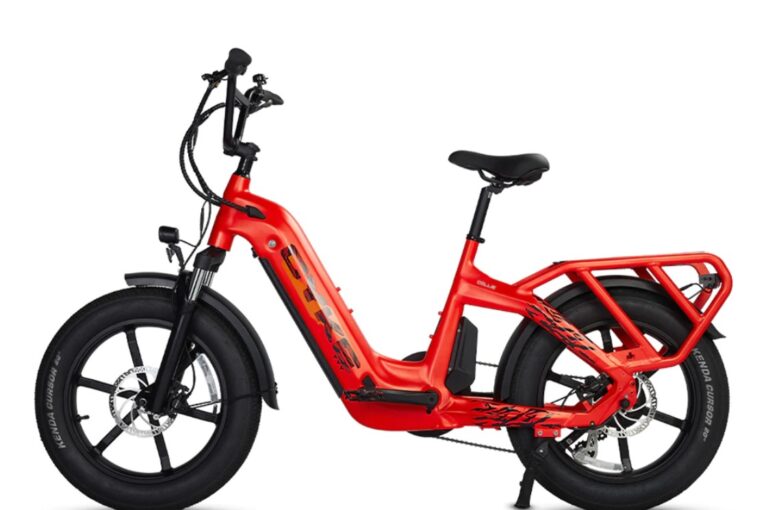With the increase of people’s demand for environmentally friendly travel methods, electric bicycle (e-bike) as a convenient and environmentally friendly means of transportation, has been favored by more and more people. However, with the increase in the number of electric bicycles, the relevant laws and regulations and safety standards are particularly important. This article will explore the importance of Fat tire electric e-bikes in terms of laws, regulations and safety standards, and introduce some relevant regulations and recommendations.
Laws and regulations for electric bicycles
Classification and speed limit: Different countries or regions have different classification and speed limit standards for electric bicycles. Under normal circumstances, electric bicycles are divided into two types of moped and motorcycle, and their speed limit standards are also different. In the United States, for example, federal law sets a maximum speed of 20 MPH for e-bikes, while Europe generally limits top speeds to 25 km/h.
Registration and insurance: Some regions require fat tire electric bike to be registered and purchase appropriate insurance, especially for electric bicycles with high speed or high power. These regulations are designed to ensure that vehicles can provide adequate compensation for possible accidents while on the road.
Safety equipment: Many areas require e-bike riders to wear helmets, and often also require the use of front and rear lights and reflective equipment at night or in low visibility conditions to improve driving safety.
Where to ride: The law may specify where to ride an e-bike, such as prohibiting riding on sidewalks or restricting driving on certain roads.
Safety standards for electric bicycles
Vehicle design: The design of electric bicycles should meet the relevant safety standards, including stable structure, reliable braking system, and durable tires. Manufacturers should carry out strict quality control on electric bicycles to ensure that they meet safety standards.
Battery safety: The battery of an electric bicycle is its power source, so the safety of the battery is crucial. Batteries should meet the relevant safety certification standards, and the correct charging and storage methods should be followed during use to prevent accidents such as battery fire or explosion.
Braking system: A good braking system is an important factor to ensure riding safety. The braking system of an e-bike should be able to brake reliably in a variety of road conditions, including slippery roads and steep slopes.
Stability and balance: The stability and balance of electric bicycles are crucial to riding safety. A good frame design and the right wheel size can improve vehicle stability and reduce the risk of rollover or roll.
When it comes to the laws and regulations and safety standards of electric bicycles, we can further explore the following aspects:
Enforcement and supervision of laws and regulations
Law enforcement: Government departments should strengthen the enforcement of laws and regulations on electric bicycles, including increasing patrol law enforcement and increasing penalties, to ensure the safety of riders and other road users.
Regulatory agencies: Establish a sound electric bicycle regulatory agency, responsible for supervising and managing the electric bicycle industry, including the development of industry standards, product testing and certification, safety education and other work.
Safety awareness and education
Cycling skills training: The government and relevant agencies can carry out e-bike riding skills training to help riders master safe riding skills and improve their ability to respond to emergencies.
Publicity and education: Through publicity and education activities, improve the public’s awareness and attention to the safety of electric bicycles, and promote riders to consciously abide by traffic rules and wear safety equipment.
Technological innovation and standard improvement
Technological improvement: Constantly promote the innovation and improvement of electric bicycle technology, improve the safety performance of vehicles, including improving the braking system, improving the stability of vehicles, and increasing the anti-theft function.
Standard improvement: Regularly evaluate and update the safety standards of electric bicycles to adapt to the development of new technologies and changes in market demand to ensure the timeliness and effectiveness of the standards.
Community participation and cooperation
Industry cooperation: The government, industry associations, manufacturers and consumers should strengthen cooperation to jointly promote the healthy development of the electric bicycle industry and jointly address the challenges and problems facing the industry.
Community participation: Community residents are encouraged to participate in the safety management and supervision of electric bicycles, establish a healthy and harmonious cycling environment, and jointly create a safe and orderly road traffic environment.
Sum up
As a convenient and environmentally friendly means of transportation, electric bicycles have been welcomed by more and more people. However, the corresponding laws and regulations and safety standards also need to be paid enough attention. Making and abiding by relevant laws and regulations can ensure traffic order and reduce the occurrence of traffic accidents; E-bikes that meet safety standards can improve rider safety and reduce the risk of accidents. Therefore, whether it is government departments, manufacturers or riders themselves, they should work together to promote the healthy development of the e-bike industry and ensure that it reaches the highest level in terms of laws, regulations and safety standards.

